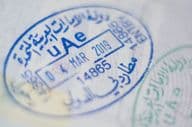Gardening in Dubai: Thriving Amidst Sand

Garden in the Desert: Irrigation Techniques and Plant Selection in Dubai's Environment
For the residents of Dubai, developing green spaces presents unique challenges. The city's tropical-desert climate — where summer temperatures often exceed 45°C and annual rainfall barely surpasses 100 mm — does not favor traditional gardens. Yet, with well-planned irrigation systems and careful plant selection, a living, flourishing garden in the midst of the desert is not only possible but increasingly popular among residents.
Landscape Design Tailored to Extreme Climates
The first step to a successful garden is planning that adapts to environmental conditions. In Dubai, summers are long, hot, and dry, while winters are short, mild, and occasionally rainy. When planning, one must consider the intensity of sunlight, soil type—which is typically sandy with low water retention—and the possibility of strong desert winds.
Creating shade is a crucial aspect: utilizing pergolas, sunshades, taller plants, or even artificial shading can protect more sensitive species. Using gravel, small-grained mulch helps retain soil moisture, reduces evaporation, and reflects heat, thus keeping roots cool.
Water as a Limited Resource – Irrigation Methods
Optimizing water usage is a primary concern for maintaining desert gardens. One of the most widespread and effective methods is drip irrigation, which delivers water directly to the plant's roots, avoiding evaporation and waste. The system can be enhanced with automatic timers and sensors that monitor soil moisture or weather conditions.
Newer technologies, like smart irrigation controllers or systems supporting the watering of salt-tolerant plants, are becoming more common in Dubai's gardens. Using condensed canopy water or recycled greywater—such as lightly polluted water from showers or laundry—provides further sustainable irrigation options.
Selecting the Right Plants – Principles of Xeriscaping
Xeriscaping, or drought-tolerant landscaping, is among the most suitable approaches for Dubai gardens. Its essence lies in featuring plants that require minimal irrigation, thus creating a habitat that is valuable both aesthetically and ecologically.
Recommended Plant Species:
Desert Rose (Adenium obesum): A popular choice for its beautiful flowers and water-retaining stems.
Bougainvillea: A colorful, climbing plant that tolerates heat well and requires little water.
Oleander (Nerium oleander): A hardy, fast-growing shrub with lush blossoms.
Agave and Aloe species: Low-water decorative succulents well-suited to sandy soil.
Fig Tree (Ficus carica): A shade-giving tree that bears edible fruit and surprisingly withstands the warm climate with adequate watering.
Ghafa Tree (Prosopis cineraria): The national tree well-suited to droughts, providing stability in sandy soil with its deep roots.
Lawn vs. Alternative Ground Covers
While a lush lawn is essential for many in a garden, its maintenance requires enormous water usage. To replace it, more natural solutions are gaining popularity in Dubai: gravel beds, decorative crushed stone, synthetic grass, or drought-resistant ground covers like ornamental grasses and herbaceous groundcovers.
Garden Care During Heatwaves
During the summer, when temperatures become unbearable, plant care requires special attention. Watering should be scheduled for early morning or late evening to prevent immediate evaporation. Shading, mulching, and occasional pruning can also contribute to plant survival during these times.
It is also important not to perform major planting or replanting between June and September, as plants are much more sensitive during these months. It is advisable to establish new plants in the milder winter months when the weather is less stressful.
Sustainability and Creating Natural Habitats
Conscientious garden planning goes beyond aesthetics—with the right plants and water management, desert gardens can also serve as habitats for pollinators, birds, and other living creatures. Increasing biodiversity is not only ecologically beneficial but also makes the garden more pleasant and livable.
By adding elements like birdbaths, shady corners, rocks, and natural features, micro-habitats can be created that fit well into the environment and require little maintenance.
Conclusion
Creating a green oasis in Dubai is not an impossible task—but it requires careful planning, plant selection suited to local conditions, and effective irrigation systems. A desert garden is not just an ornament, but a space that improves quality of life, offering relaxation and harmony if managed sustainably. With the right approach, the closeness to nature and the refreshing sight of greenery can become not just a dream in the desert, but a real, sustainable way of life.
If you find any errors on this page, please let us know via email.


